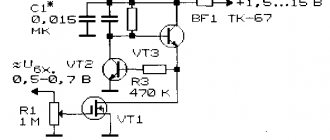Electrical safety is a system of organizational measures and technical means that prevent harmful and dangerous effects on workers from electric current, electric arc, electromagnetic field and static electricity. Electrical safety includes legal, socio-economic, organizational, technical, sanitary and hygienic, treatment and preventive, rehabilitation and other measures.
Electrical safety rules are regulated by legal and technical documents, regulatory and technical framework. Knowledge of the basics of electrical safety is mandatory for personnel servicing electrical installations and electrical equipment.
Electric current is dangerous to life! The degree of its impact depends on many factors: the type and magnitude of voltage and current, the frequency of the electric current, the path of the current through the human body, the duration of the influence of the electric current on the human body, and environmental conditions.
A person begins to feel alternating current of industrial frequency at 0.6 - 15 mA. A current of 12 - 15 mA causes severe pain in the fingers and hands. At a current of 50 - 80 mA, respiratory paralysis occurs, and at 90 - 100 mA, cardiac paralysis and death occur. It is important to remember that it is not the voltage that affects the human body, but the magnitude of the current. Under unfavorable conditions, even low voltages (30 - 40 V) can be life-threatening! In order to ensure that as few cases of electric shock as possible occur in the home, it is necessary to ensure that electrical safety rules are known and understood by everyone. I would be glad if the proposed instructions help to clearly understand the seriousness and mandatory necessity of electrical safety measures, as well as learn ways to safely use electrical energy in everyday life and understand what causes certain electrical safety requirements.
Introduction
Electricity has become part of our everyday life so long ago that it seems as if it was discovered at the time of the invention of the wheel, or maybe even earlier. The popularity of using electrical energy is very simple to explain: it is electricity that powers various mechanisms and machines, electric vehicles and all kinds of household appliances. It helps to facilitate various work and organize leisure time: remember how much time we spend in front of the TV, computer or home theater. At the same time, electricity is not noticeable, does not make noise, and has no color or smell.
It can only be detected with the help of instruments; in the simplest case, such a device is an ordinary light bulb or an indicator screwdriver. But often this “invisibility” can turn electricity from a good helper into an evil enemy, from creative energy into destructive, and sometimes even deadly. Moreover, unsuccessful experiments with electricity can cause fear of such work for life.
Documents for certification
To test employees’ knowledge of electrical safety, the organization’s management writes an application to Rostekhnadzor. The following documents are attached to it:
- an extract from the Logbook for testing knowledge of working rules in electrical installations, as well as a protocol for testing knowledge of working rules in electrical installations - for employees who work at energy facilities;
- an extract from the Logbook for testing knowledge of working rules in electrical installations - for employees of organizations that are consumers of electrical energy.
Extracts are certified by the organization that sends employees for certification. For organizations that are consumers of electricity, certification is organized in specialized training centers; they do not have to contact Rostechnadzor.
Electrical safety, home experiments with electricity
Each of us, of course, had to screw in a light bulb, repair a burnt cord on an iron, or tighten the contacts in a socket. In this case, it is not at all necessary to have a special electrical engineering education. In much the same way as it is not necessary to know down to the smallest detail the structure of an internal combustion engine in order to become a car enthusiast. Minor faults can be eliminated without knowing the whole car as a whole, but in serious cases you can always contact a car service. It’s exactly the same with electricity: it’s absolutely not necessary to invite an electrician from the housing office to replace a faulty switch or socket. But at the same time, you need to know why electricity is dangerous, and what rules must be followed so as not to forever lose the desire for such work. After all, you must admit, it’s not at all fun to sit all day and wait for a good uncle to come and click on a switched off machine or RCD, because you are afraid to do it yourself or simply don’t know about it.
Of course, to carry out serious electrical work you will need a whole set of tools, but first you should get acquainted with the basics of electricity, and also remember about electrical safety.
Electrical safety, the dangers of electricity
So why is electricity dangerous for the human body? There are two main reasons here. This is a simple mechanical damage to tissue, and in addition, an effect on the human nervous system, leading to very serious consequences.
From the history of the development of electricity, it is known that the Italian doctor Luigi Galvani used dissected frogs in his experiments, because there were no electrical measuring instruments at that time. A weak electric current passed through the nerve endings caused the muscles of the frog's legs to contract. Now this phenomenon has been studied quite well, and everyone knows that not only frog legs, but all human muscles, including the heart, contract from electrical impulses generated by the central nervous system. A person has his own electricity, very low-power, but sufficient to control the entire body, all its organs.
If a person comes into contact with a bare live conductor, two dangerous situations are possible. Firstly, it has an effect on the nervous system. As mentioned above, the human body is controlled by weak electrical impulses. If an electric current from an external source passes through human tissue, the body reacts to it as if it were electrical signals from its central nervous system. But external signals can turn out to be much stronger than internal ones, they can simply be “drowned out”, so they cause erratic, convulsive contraction of muscles that come into a state of constant tension and cannot be relaxed. In such cases they say that electric current attracts.
Documenting
Data on passing the test is recorded in the books of Rostechnadzor and the knowledge testing journal, in which there is a special column for this. After this, the employee’s identification card is filled out.
Note! Log entries and testing reports help identify counterfeit IDs that have been acquired illegally. If an employee received a document illegally, there will be no entries about it in the accounting journals and books
Such an employee will be considered to have failed the exam.
If an employee received a document illegally, there will be no entries about it in the accounting journals and books. Such an employee will be considered to have failed the exam.
Requirements for employees
Electrical safety, main causes of electric shock
Electrical safety group 1
The main causes of electric shock at home are:
- violation of basic electrical safety standards
- operation of faulty electrical appliances
- careless and inattentive attitude to electrical installations at home and on the farm
- repair of electrical appliances and electrical wiring by persons who, to put it mildly, have insufficient qualifications
Here are a few general rules that, if followed, can prevent possible troubles when operating household electrical appliances.
1. Very often, the cause of electrical injuries is a violation of the insulation of electrical wiring in places accessible to touch. This is especially true for rooms where electrical wiring is exposed. Therefore, it would be useful to periodically inspect and check the insulation resistance of electrical wires. Therefore, if an insulation violation is detected, it is necessary to take urgent measures to restore it.
2. If, for one reason or another, short circuits and overloads occur in electrical circuits, circuit breakers must be turned off or fuse links installed in the input panels of residential buildings or apartments must blow out. To prevent fires in the electrical wiring, the current settings of these devices must be calibrated, that is, they must operate at currents exceeding the established values.
3. When operating intra-house electrical networks, it is very important to monitor the serviceability of electrical wiring installation elements, that is, sockets and switches, so that they do not cause electric shock.
4. The power cords of many household appliances often fail due to a break or break in the current-carrying conductor, which can cause sparking, heating and even fire of the wire. Therefore, it is very important to ensure that the insulation of the wire and plug of the power cords is in good condition.
5. If it is necessary to repair electrical appliances, it is necessary to first disconnect the electrical appliance from the network. But it would still be right if you entrust the repairs to a qualified specialist.
6. It is very important to pay attention to the grounding of metal casings of electrical installations. This will protect you from electric shock if the insulation is broken and dangerous voltage appears on the housing of the electrical receiver. Therefore, electrical networks in modern houses and apartments are made three-wire - with a grounding protective conductor.
7. Do not leave electrical appliances under voltage unattended for a long time.
These simple rules guarantee us reliable operation and safety when operating household electrical appliances.
Fifth group of electrical safety clearance
Electrical safety group 5 assumes that a specialist can perform any work on servicing electrical installations.
Electrical safety group 3 group
A category 5 electrical safety permit is assigned to employees responsible for electrical facilities, as well as to enterprise employees who are responsible for the operation of electrical installations with voltages over 1000V. They may supervise electrical workers and other crew members working on similar equipment.
For your information. Certification of electrical personnel servicing electrical installations and equipment must be carried out at least once a year. For occupational safety specialists inspecting electrical installations, it is enough to pass one certification every three years.
If an employee is transferred to another position, as well as if it is necessary to perform work with new equipment, an extraordinary certification is carried out.
Thus, preparing and passing an exam to obtain permission to perform a certain type of work will allow the employee to gain knowledge on the safe maintenance of electrical equipment.
Properties of various current sources
The main damaging factor of electricity is not high voltage, as most citizens think, but the current flowing through the human body. Everyone has seen the bluish sparks of static electricity that occur when clothing is removed. The voltage of such sparks is in the range of 7 - 10 thousand volts. But the power of such a current source is extremely low, so such electricity cannot cause any harm to the body. It is much more dangerous and unpleasant to touch ordinary wires of a lighting network: with a voltage of only 220 V, the output current of such wiring can reach 16 - 20 A. Such a source is quite capable of delivering a current that is dangerous and even fatal to humans.
According to safety rules, a person begins to feel an alternating current of 1 milliampere passing through the body. A current of 10 mA is considered dangerous; at such a current, a person is still quite capable of breaking away from the live part on his own. A current of 50 milliamps and above is considered fatal and can lead to death. The question about these current values is often asked during periodic certification of electricians. Alternating current has a negative effect on a person at slightly lower values than direct current, but contacts with direct current, at least in everyday life, occur much less often.
Collective protective equipment:
· potential equalization;
· insulation of live parts in a broad sense (electrical insulation: working, additional, reinforced, double; physical insulation: fencing devices, location at an inaccessible height and distance);
· automatic control and alarm devices;
· remote control devices;
· lightning rods and arresters;
· safety signs.
· Protective grounding
- intentional connection of metal potentially electrically hazardous parts of an electrical installation, as well as disconnected live parts, with the ground or its equivalent in order to ensure electrical safety. Protective grounding is installed in networks with voltages up to 1000V with an isolated neutral in order to create a sufficiently low electrical resistance between the body of the protected device and the ground. Due to the low resistance, the current through the human body connected to the body is reduced to an acceptable (42 Volt) value. Therefore, the cross-section of grounding conductors is selected based on mechanical strength and thermal stability. For vertical grounding conductors, angle steel 60*60 and 50*50 with a length of 2.5 - 3 m is recommended. For strip grounding conductors, steel strips with a thickness of 4 mm or more and a cross-section of at least 48 sq. mm are accepted.
Zeroing -
intentional electrical connection of metal non-current-carrying parts of an electrical installation, which may become live as a result of insulation failure, with a neutral protective conductor.
The task of grounding is to turn a breakdown on the housing into a short circuit between the phase and neutral wires, which thereby causes the flow of a large current that can ensure the operation of the protection, and thereby automatically disconnect the damaged installation from the supply network. Fuses or circuit breakers are used as protection.
Safety shutdown
— fast-acting protection that ensures automatic shutdown of the electrical installation when there is a danger of electric shock.
Application of low voltage.
Reducing the voltage of an electrical installation can significantly improve electrical safety conditions. So, with a voltage of 10-12 V and a human body resistance of 5-6 kOhm, the current passing through the human body will not exceed 2 mA. Such current is safe even when passing through the human body for a long time. However, widespread use of such low voltages is impossible due to the need to obtain the required power of electrical receivers. Therefore, for production purposes, a category of low voltages has been established, which includes voltages of no more than 42 V. In industrial premises with increased danger, a voltage of 42 V is used to power hand tools and portable lamps, and in particularly dangerous premises - 12 V.
Protective means in electrical installations.
Protective equipment used in electrical installations with voltages up to 1000 V and above are divided into the following groups:
1.
Insulating. Their purpose is to protect a person from electric shock by isolating him from live parts. The insulating group includes: rods, pliers, dielectric gloves and boots, insulating stands and mats.
2.
Portable voltage indicators.
3.
Portable temporary protective grounding.
4. Eye protection and safety belts.
Electrical safety, physical effects of electric current
As is known from the laws of physics, an electric current passing through a conductor causes it to heat up. Just remember an electric stove or just an incandescent lamp. In our case, such a conductor is a person exposed to current. Heat will also be generated inside the fabrics. What and how much, everything depends primarily on the condition of the skin, simply put, the skin. The electrical resistance of the skin is individual for all people and depends on many reasons. It is this resistance that limits the flow through the body. There are cases where a person held two wires from a socket with his hands for a long time without any harmful consequences. But this is rather a happy exception than a rule: after all, most people cannot do such a trick, and touching a bare wire is, if not fatal, then very sensitive for most.
Under certain conditions, skin resistance is significantly reduced. This can be caused by painful conditions in the person or simply when the skin is wet, soaked in water or sweat. Under such conditions, the current flowing through the body is noticeably higher, more heat is released in the body, and the consequences may be more severe. There are known cases when an electric current actually fried internal organs, without leaving visible marks or damage on the surface of the skin.
A current of about 30 - 50 mA passing through the heart area can lead to fibrillation (fluttering) of the heart and its subsequent reflex stop. If the current does not affect the heart muscle, then paralysis of the respiratory muscles is quite possible, which also does not bode well. After all, the paths of electric current in the body are unpredictable and bizarre. In addition, simply superficial skin burns are possible, as well as damage to the retina during electric arc flashes during a short circuit. A burn to the retina by hard ultraviolet radiation can lead to inversion of color perception, or even to blindness, temporary or even permanent.
Danger of injury from touch voltage and step voltage when current flows in the ground.
The short circuit of live parts of electrical installations to the ground is accompanied by the flow of current through them. In this case, due to the resistance of the earth, a voltage drop occurs and a potential difference appears between individual points on the surface of the earth.
At a distance of 1 meter from the point where the current flows into the ground, the potential decreases by 68%. At the end of the tenth meter the reduction reaches 92%, and at a distance of 20 meters the potential of the ground points is practically zero. A similar pattern of potential distribution is observed in grounding conductors of other forms (rod, plate, place where a broken wire falls to the ground).
The danger of injury from touch voltage and step voltage depends on the nature of the distribution of potentials and the position of a person relative to the place where the current flows into the ground.
Touch voltage refers to the voltage between two points in a current circuit that are simultaneously touched by a person.
The permissible value of touch voltage on the human body is understood as the greatest value of voltage that can be applied for a certain time to the human body between the arm and legs, i.e. the voltage drop across the human body between the arm and legs when a permissible current flows through it.
The voltage between two points of the current circuit on which a person is simultaneously standing, i.e. between points located one step apart is called step voltage
, i.e. This is the voltage drop across the human body connected to an electrical circuit along the leg-to-leg current path.
If a connection to the ground of any current-carrying part of the installation is detected, it is prohibited to approach the place of damage at a distance of 4 m in closed switchgears and 10 m in open areas.
A fairly intense cramp occurs if the step voltage is 100-150 V. When current flows along the “leg-to-leg” path, such voltage cannot lead to cardiac fibrillation. But as a result of leg cramps, a person may fall to the ground. In this case, the distance between points on the ground, which he will now touch with his hands and feet, may increase, and therefore the potential difference increases. In addition, the current will flow along the more dangerous “arm-to-leg” path. The action of all these factors can lead to electric shock to a person.
Electrical safety, chemical effects of electric current
An electrical discharge passing through human tissue causes changes in the electrolytic properties of lymph, blood, tissue fluid, etc. Such changes are very harmful, because the composition of the blood must be unchanged and remain so all the time. A serious illness of the body can cause changes in the properties and quantity of red blood cells, changes in acidity and chemical composition. From everything that was said above, conclusions can be drawn, and they are not very comforting: any unexpected contact with electricity, although not always fatal, is quite unpleasant. The severity of the injury depends, first of all, on the strength of the current and the duration of its effect on the body.
Very serious consequences do not always arise: according to statistics, only one case in 120 - 140 thousand unexpected contacts with electricity ends in death. Although, quite often, injuries of varying severity occur, which does not give reason to treat these cases without due attention. This is especially true for those situations when a person works with electricity every day - when repairing electrical equipment or installation work. Studying the rules of electrical safety and using protective equipment will help, if not avoid it completely, then at least minimize the risk of electric shock.
To whom is it assigned?
Persons working in certain professions need to obtain qualification group No. 2 in electrical safety. These are specialties that are associated with the conditions listed in the “Rules for the technical operation of consumer electrical installations” (PTEEP) and in the “Rules for labor protection during the operation of electrical installations” (POTEE).
Each individual enterprise has a list of specific positions and jobs related to the need for access to electrical equipment. Approval of such a list is the responsibility of the head of the organization.
These positions include:
- electric welders;
- machine equipment operators;
- crane operators;
- boiler equipment operators;
- signalmen;
- thermists;
- drivers of special cargo transport;
- persons working with power tools;
- electricians on probation.
The video from the channel “STBSH CHU ODPO” tells who at the enterprise must undergo training in electrical safety rules.
Categories of electrical technical personnel
All electrical personnel are usually divided into several categories:
| Staff | Functions |
| Administrative and technical | Managers and organizers of the work process |
| Operational | Operations management workers who service electrical installations. Employees prepare workplaces and directly supervise the process. |
| Repair | Personnel who provide:
|
| Operational and repair | Employees are engaged in repair work. Personnel must be prepared for prompt maintenance of electrical installations. |
Requirements for candidates
Officials or workers wishing to receive electrical safety group 2 must meet the following requirements:
- be at least 18 years of age;
- have two months of experience working with electrical devices.
Employees can be admitted to the test only if they have completed ES training lasting at least 72 hours. The exam is available to workers in the electrical sector without work experience or relevant education: applicants must have access group No. 1.
How to free a victim from electric current
If the victim is under the influence of current, it is necessary, first of all, to take measures to free him from contact with the conductor. The person providing assistance must ensure his own safety, remembering that the victim himself is in such cases a conductor of current and touching him is as dangerous as touching the current source. If you cannot quickly turn off the current (turn off the switch or switch, unscrew the plugs), you need to cut the wire with a tool (axe) with a non-conducting dry wooden handle or wire cutters with protective insulation on the handle, standing on a dry board, a bundle of dry clothes, etc. If this is not possible, you need to drag the victim or lift him off the floor, using a dry non-metallic object (stick, board, rope, etc.) or hands wrapped in non-conductive fabric, without touching the naked parts of the body. If the end of a broken wire falls on the victim, you must throw it away or pull the victim away from the conductor, acting in the same way.
Electrical safety, first aid
If the victim is unconscious, but has breathing and a pulse, it is necessary to bring him to his senses: give him a sniff of ammonia, pat his cheeks, sprinkle him with water. If the victim is not breathing or is breathing spasmodically, it is necessary to immediately begin mouth-to-nose or mouth-to-mouth artificial respiration and chest compressions in the absence of a pulse. At the same time, call other people who should provide assistance and call an ambulance.
Before starting the artificial respiration procedure, the victim must be placed on his back so that his airways are free for air to pass through. To do this, his head is tilted back as much as possible. Placing one hand under the neck, the other presses on the crown. As a result, the root of the tongue moves away from the back wall of the larynx and airway patency is restored.
When the jaws are clenched, it is necessary to push the lower jaw forward and, pressing on the chin, open the mouth, then clean the oral cavity from saliva or vomit with a napkin and begin artificial respiration: place a napkin (handkerchief) in one layer on the open mouth of the victim and pinch his nose , take a deep breath, press your lips tightly to the victim’s lips, creating a tightness, and forcefully blow air into his mouth. It is necessary to blow in such a portion of air that each time it causes the most complete expansion of the lungs, which is detected by the movement of the chest. Small portions of air will not have any effect. Air is blown in rhythmically every 5–6 seconds, which corresponds to 10–12 times per minute until natural breathing is restored.
Abstract on electrical safety for conductors of passenger cars
Abstract on electrical safety for conductors of passenger cars
Electrical safety is a system of organizational, technical measures and means that ensure the protection of people from the harmful and dangerous effects of electric current, electric arc, electric field, and static electricity on humans.
The conductor of a passenger car has group II in electrical safety and belongs to electrical engineering personnel with the right to service electrical installations up to and above 1000V. This group only gives the right to service the low-voltage and high-voltage electrical equipment of the car - turn on and off switches and toggle switches on the electrical panel, monitor the operation of electrical equipment using signal lamps.
Forbidden!!! - conductor of passenger cars to carry out any repair work in the electrical equipment of the car!
- The frequency of passing the exam is once a year. Persons who have not passed the electrical safety knowledge test, persons who have passed the periodic knowledge test have expired, are not allowed to work! Workers with Group II clearance for electrical engineering personnel must have basic technical knowledge of electrical installation maintenance, a clear understanding of the dangers of electric current and approaching live parts, and practical skills in providing first aid to victims of electric current. Conductors of passenger cars must know the structure of the electrical equipment of the car, be able to use it and have safe working practices.
How dangerous is electric current?
- this is an invisible, odorless and colorless danger, the severity of the outcome - loss of ability to work due to electrical injuries can be long-term, death is possible; industrial frequency currents of 50-60 Hz can cause muscle spasms, resulting in “chaining” to live parts. In this case, a person cannot independently free himself from the action of electric current.
The consequences of electric shock depend on the strength and frequency, the duration of its exposure, the direction of passage through the human body, the state of the environment (humidity, floor conductivity, etc.) and the state of the body. R (resistance) of a person - depends on the moisture and cleanliness of the skin, the density of contact. R person=1000-50,000 Ohm.
Ohm's law for a section of a circuit - I = U/R
I
— Current (A)
U
— Voltage (V)
R
— Resistance (Ohm)
The effect of electric current on the human body:
- thermal effect (burns); electrolytic; biological;
The main causes of electric shock:
- touching live parts under “voltage”; coming under “step” voltage; violation of safety regulations;
Safe voltage:
- Up to 50V - in dry rooms of any hazard category - with alternating current; Up to 120V - in dry rooms of any hazard category - with direct current; Up to 12V - alternating current in damp rooms;
Basic quantities:
- Lethal current strength - 0.1 Ampere Dangerous current strength - 0.01 Ampere Voltages dangerous to human life - from 12V and above.
Conductors must know the structure of the electrical equipment of cars, be able to use them, be able to turn off and turn on consumers, and be able to de-energize the car's circuits. Distribution boards are cleaned - el. mechanic, PEM.
Before setting off on a flight, check the serviceability of electrical equipment. Work related to troubleshooting electrical circuits should be performed by a PEM. Before turning on the boiler, check the availability of water, use the sockets along the corridor for razors, a vacuum cleaner, and a telephone; before turning on, check that the sockets are working properly.
Low-voltage equipment of passenger cars:
- Generator Battery Lighting Air conditioning system Ventilation 110V and 220V outlets Boiler Refrigerator Water cooler, etc.
High-voltage equipment of passenger cars:
- Boiler with electric heating elements Under-car high-voltage main High-voltage box Idle receiver, working socket High-voltage inter-car connection Heating elements: W heating elements = 2 kW. U heating elements = 500V W boiler = 48 kW, U = 3000V, I = 16 A
Purpose:
Currently, the fleet of passenger cars consists of cars with combined heating. The carriages retain a water heating system with a hot water boiler. At the same time, high-voltage heating elements are installed inside the boiler. To heat these cars from the locomotive, as well as from a stationary high-voltage column, a single single-wire system with a voltage of 3000V was adopted. Direct or single-phase alternating current of industrial frequency 50Hz. The difference lies in the current used in the contact network along the train route. The Russian railway network uses two types of voltage: 27500V single-phase alternating current, or 3000V direct current. With alternating current, the voltage must be converted from 27500V to a voltage of 3000V before being supplied to the undercar high-voltage main line of the cars.
All HVO (high-voltage heating) elements must be grounded to the car body using jumpers. Between the body and the bogie frames, grounding jumpers are installed, connected with bolts. When accepting the car, it is necessary to check the bolt fastening. It is prohibited to open the VVO box, the boiler casing, turn on the VVO when there is no water in the boiler, wash the boiler, or the floors in the boiler room when the VVO heating is turned on.
Grounding is the intentional electrical connection of any point in an electrical installation or equipment system to earth or its equivalent.
Protective grounding
– this is the grounding of parts of an electrical installation that may be energized in order to protect personnel from electrical damage. electric shock
In a passenger car, protective grounding is installed on: - two idle and two working sockets; — locking key in the BB box; - boiler casing; - the cover of the contact box.
Working ground
- this is the grounding of parts of an electrical installation in order to ensure the operation of electrical equipment.
In a passenger car, working grounding is installed on: - Boiler - Car body - Bogie - Axle box; — The axle box is connected to the wheel, the wheel to the rail.
When operating VVO, the following requirements must be observed:
- The boiler room is locked; Before entering the boiler room, it is necessary to turn off the VBO by switching the packet switch to the “O” position; It is impossible to operate the VVO if there is a water leak in the boiler room from the water supply system; You cannot store foreign objects in the boiler room; It is prohibited to pour water, throw garbage, slag onto transition areas; It is prohibited to carry out wet cleaning in the boiler room in the presence of high voltage; You cannot independently switch the heating mode to the “Manual mode” position if the “Automatic mode” is faulty. The switching is carried out by the PEM with instructions on constant monitoring of the operation of the air intake (water temperature in the boiler, temperature in the car interior, water level in the boiler).
Before supplying high voltage to the high-voltage main line of the train from a stationary column, the train crew must be informed about this, via loudspeaker communication or in person. On the end doors of the head and tail cars there must be a sign with red inscriptions “Caution! Composition under high voltage!
The route for supplying high voltage to the car is – Contact wire – Pantograph – Step-down transformer – High-speed switch – Undercar main line – Contactor box – Boiler.
Safety precautions when working on electrified sections of the railway:
It is prohibited to approach a live contact line within a distance of 2 meters. It is forbidden to approach energized broken wires of the contact network at a distance closer than 8 meters. If a broken wire is detected, you must inform the station duty officer or energy dispatcher about it. If you get into the step voltage zone, immediately leave it in small steps (feet together).
Basic terms and concepts
Step voltage is the potential difference affecting a person located in the current spreading zone. We leave the zone of step tension without lifting our feet from the ground and so that there is no gap between our feet; jumping on two legs pressed together; Lying on the ground, roll out of the zone. Otherwise, step voltage is the voltage between 2 points of the circuit, located one step apart from each other, on which a person is simultaneously standing.
Touch voltage is the potential difference between two electrical points. chains that are simultaneously touched by a person.
An electrical installation is a set of machines, devices, lines and auxiliary equipment (together with the structures and premises in which they are installed) intended for the production, use, transmission, conversion and other electrical energy.
Induced voltage is a life-threatening voltage that occurs as a result of electromagnetic influence on disconnected wires and equipment located in the area of another active overhead line or AC contact network.
All metal structures at a distance of 75 meters from the high-voltage line must be grounded! Security zone - 10 meters! Do not get closer than 2 meters to a hanging electrical wire!
Types of posters:
| Warning |
| Prohibiting |
| Prescriptive |
| Pointing |
Freeing a person from the action of electronic devices. current in electrical installations with voltages up to 1000V and above 1000V.
1. Quickly disconnect the electrical installation (with a switch, remove fuses or by cutting the wires one at a time), take measures to ensure safety in case of a fall, have a flashlight ready.
Precautionary measures
- do not come into contact with the live part, with the body of the victim, and also do not come under the influence of step voltage.
2. You can cause a short circuit to disconnect a high-voltage line by throwing a securely grounded wire onto it.
3. Take the victim out of the current spreading zone to a distance of 8 meters in small steps (in single file).
First aid for a victim of electric shock:
First aid is a set of measures aimed at restoring or preserving the life and health of the victim, carried out by non-medical workers.
1. Free from electric current
2. Determine the condition of the victim within 15-20 seconds. To do this, you need to lie on your back, determine the presence of breathing, pulse, and consciousness.
3. Carry out measures in the order of necessity: - restore airway patency; — artificial respiration; - external cardiac massage.
4. SUPPORT BASIC LIFE FUNCTIONS of the victim until paramedics arrive.
Resuscitation of an injured person
Resuscitation consists of performing external cardiac massage together with artificial respiration.
1. Make sure there is no pulse, place on a hard surface.
2. Free your chest from clothing and unfasten your waist belt.
3. Throw your head back - one palm on the back of your head, the other on your forehead, so that your chin is in one line. You can place a roll of folded clothing under the shoulder blades, examine the oral cavity, clean it with a handkerchief, and return the head to its original position.
4. Determine the place of pressure - two fingers above the soft end of the sternum; you cannot press higher or lower because you can break the ribs or damage the liver.
5. Place both palms, fingers do not touch the chest. Press with a quick push 1 time per second. At the same time, artificial respiration is performed. The ratio is 1 to 5. If the chest does not rise, it is necessary to extend the lower jaw and take 2 breaths and 15 pressures until breathing and heartbeat are restored.











